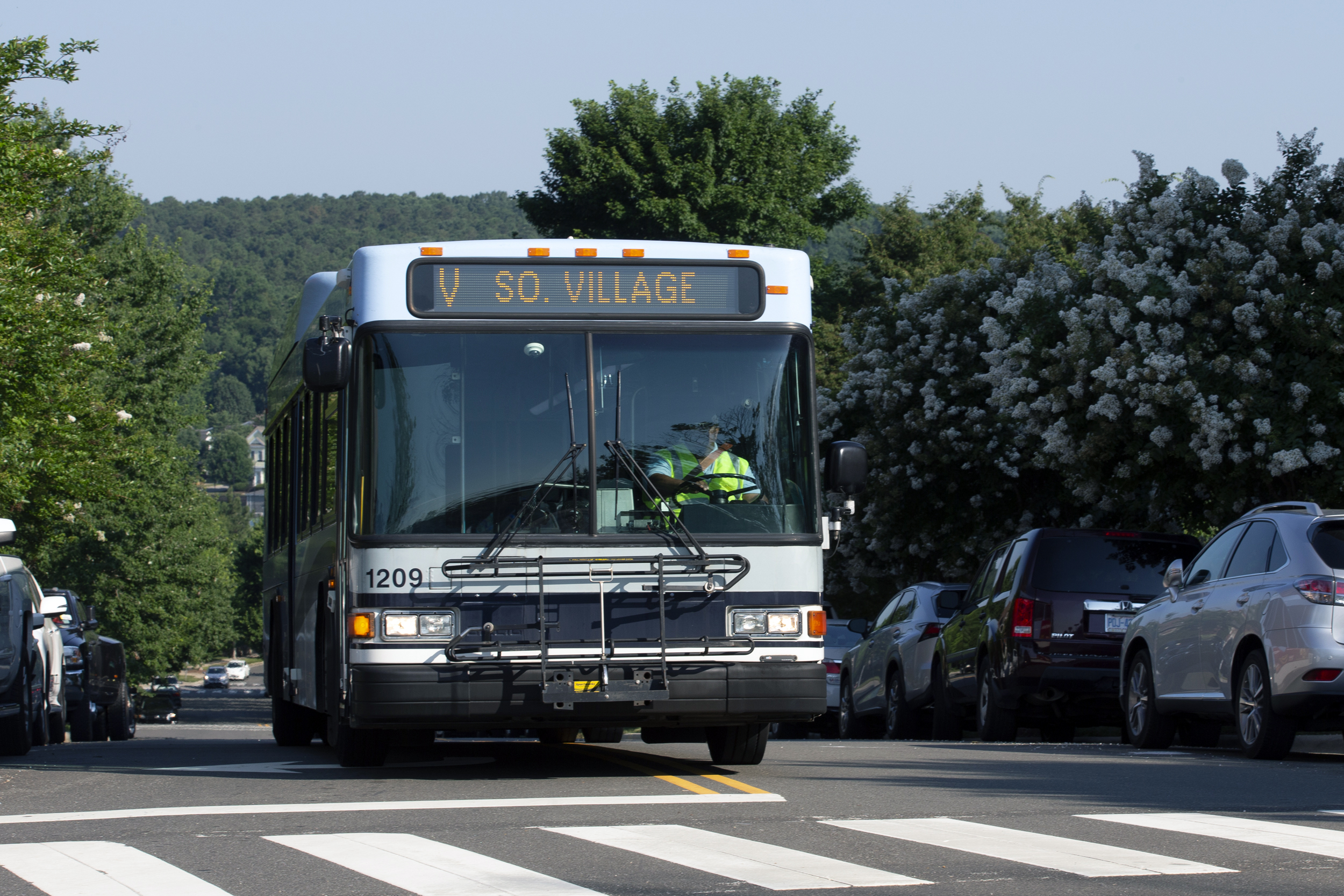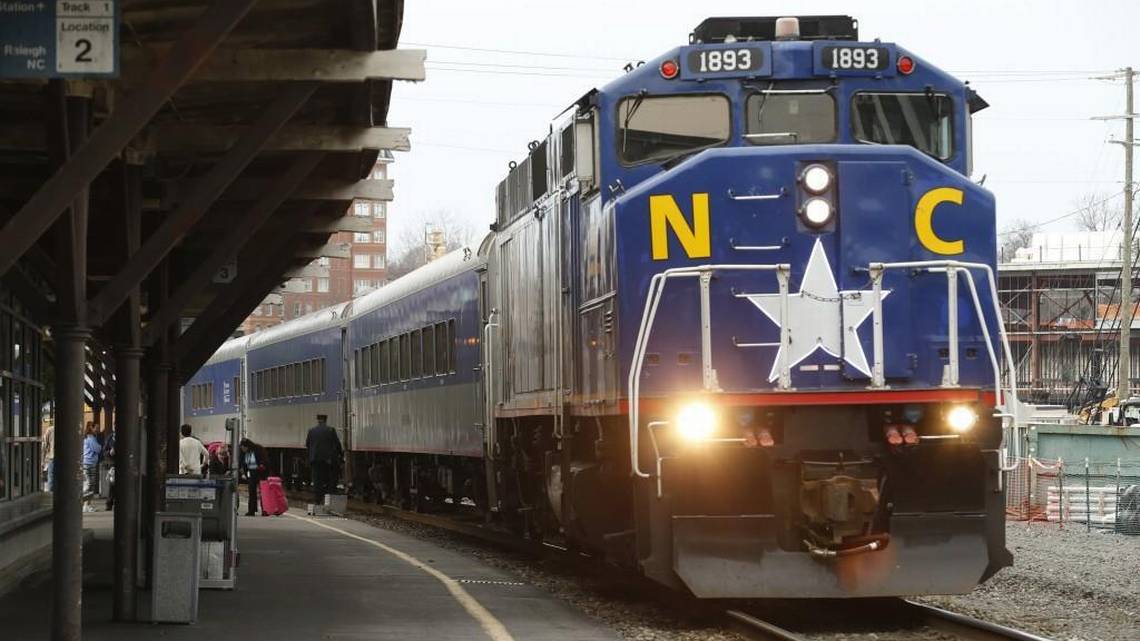Elected officials from Chapel Hill, Carrboro, Hillsborough and Orange County came together with representatives from GoTriangle Thursday evening to discuss budgetary issues related to the Durham-Orange Light Rail Project.
The groups are now hurrying to come up with enough money to fill a gap in the current budget that was created by a recent change in federal policy.
The Federal Transit Administration has said it would reimburse 50 percent of the total cost of the project.
It was initially expected to pay $125 million dollars per year over an eight-year period, but GoTraingle project director Danny Rodgers said FTA has decided to give $100 million per year over a ten-year period instead.
“It still takes about eight years to realized the reimbursement,” Rodgers said. “We will construct it faster than that, so our expenditures are going to outpace our revenues, so basically we’re having to front that money.”
In order to cover the $200 million gap, GoTriangle is attempting to raise private funding, totaling $25 million dollars. Rodgers said GoTriangle is hoping for Durham and Orange Counties to cover the rest of the gap.
“That would come out to about $175 million to get us to the $200 million,” he said. About $13.5 million from Durham and $4 million from Orange (per year).”
Rodgers said the money would not be required until 2020, when construction is scheduled to begin and after the project received a funding grant.
However, both counties are under a time constraint. The project is currently part of the New Starts Program, which is the federal grant program that funds major transportation projects.
In order to remain in the New Starts Program, the Durham-Orange Light Rail Project must move from the planning stage to the engineering stage before February.
For that to happen, it needs a plan in place to cover the funding gap before the end of December. This would require both counties to approve potential funding for covering the gap as soon as possible.
GoTriangle is looking for Orange County commissioners to approve this in its meeting December 5.
“(The county) is not necessarily committing the money,” Rodgers said. “But you are committing to working with us and your municipalities to find a way to make that happen.”
The problem is further compounded by the recent decision by the state to drop its funding commitment from 25 percent of the total cost to 10 percent. This is a difference of around $240 million.
Orange County Board of Commissioners chairman Earl McKee said he is worried about the county having to cover both gaps.
“My fear is this four million dollar gap that we’re going to be asked to cover each year is going to cause a three cent, at a minimum, tax increase that is dedicated to this project when we should not be asking that,” McKee said.
Chapel Hill mayor Pam Hemminger said she wanted to see light rail come to Orange County.
“We know the need and the desire now,” she said. “But there’s some big decisions to be made and I want it to work.
Should the project not receive approval for possible additional funding from the counties, Rodgers said it could delay the project at least a year.
Once out of the New Starts Program, the project would not be eligible for any reimbursements until it qualified once again.
Related Stories
‹

Orange County Sets Public Hearing for Updates to Transit PlanTen years ago, Orange County voters approved a new half-cent sales tax to go toward a variety of transit projects and long-term expansion of connectivity through the county. As part of the measure, the county government created a long-term Transit Plan to help guide elected officials and staff on how to use those funds. Now, […]

Supreme Court: NC Railroad Isn’t Subject to Open Records LawThe North Carolina Railroad Co., a nearly 175-year-old company now owned fully by the state, can withhold documents from the public because it isn’t subject to open records laws, the state Supreme Court has ruled. A majority of justices upheld on Friday a lower court ruling that involved a 2019 lawsuit filed by the Southern […]
![]()
Updates on Light Rail, and Public Input tooGoTriangle will host its last open house on November 19 to collect public comments on the light rail and highlight changes brought to the project so far. The event, originally scheduled for earlier this week, was delayed because of the issues surrounding the water main break. The location and time will remain 5 to 7 […]
![]()
NCDOT Hosting Public Input Session on NC 54 ImprovementsThe North Carolina Department of Transportation will host a public open house meeting on Tuesday, July 10, discussing the future of a major corridor between Chapel Hill and Durham. The session, which will be held at the Friday Center, will allow Chapel Hill and Durham residents to learn about the proposed construction NC DOT envisions […]
![]()
Orange County Cost Share of DOLRT Drops After Negotiation But Questions RemainThe first in a series of votes on whether the proposed Durham-Orange Light Rail line will move forward is scheduled for Monday night. Some Orange County Commissioners appear to be more comfortable with a renegotiated cost-sharing plan with Durham County regarding the project. “I need to thank our negotiators,” commissioner Mia Burroughs said at last […]
![]()
Orange County Facing April 30 Deadline for Light Rail FundingAfter Orange County committed in December to consider spending an additional $40 million over a 10-year period on the Durham-Orange Light Rail project, the commissioners once again have a major decision to make. The Federal Transit Administration is looking for additional documentation to ensure the project can continue as planned. GoTriangle general manager Jeff Mann […]
![]()
Congressmen Advocate for Light Rail ProgressGoTriangle is continuing to work with local and state officials to make the Durham-Orange Light Rail Transit Project a reality. The organization hosted a tour Monday of the project corridor for congressmen David Price and G.K. Butterfield, along with other local officials. The corridor included the added stop at North Carolina Central University. Butterfield said […]
![]()
Work Continuing on Durham-Orange County Light Rail Amid Budgetary ConcernsGoTriangle is continuing working with local universities, health care institutions, government and the private sector to continue its plans for a Light Rail that would potentially travel between Durham and Orange Counties – even while budgetary concerns remain due to a cap on light rail spending put in place by the General Assembly. After receiving […]
![]()
North Carolina Budget Proposal Includes 10 Percent Cap on Light Rail SpendingWhile the $500,000 cap on light rail spending that was mysteriously placed in the state budget last year has been removed from this year’s spending proposal, it has been replaced by another cap. The newly-agreed-to budget that was released late Monday includes a provision that caps state funding on light rail projects at 10 percent […]
›




Comments on Chapelboro are moderated according to our Community Guidelines